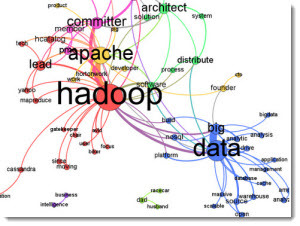If you’re not leveraging customer analytics, you may be selling your business short.
In fact, companies that subscribe to the practice of collecting and leveraging customer analytics significantly outperform their competitors, according to McKinsey.
Moreover, firms that make extensive use of customer analytics are more than twice as likely as their competitors to generate above-average profit, sales and ROI — and they’re nearly three times as likely to generate superior revenue growth.

Achieving these types of results requires employing a smart customer analytics strategy.
In other words, merely having your IT department gather data without a solid strategy in place won’t automatically translate into financial improvements.
With that in mind, here are three keys to effectively leverage your customer analytics data for optimal business performance.
1. Draw Data from All Channels
In order to leverage customer analytics successfully, you need to base your analysis on a comprehensive view of data throughout your organization.
Sure, companies that work with data in silos may collect plenty of pertinent information, but they’re capturing just a snapshot of the buyers’ cycle, thereby only seeing a distorted view of their customers.
These days, customers expect the brands with which they do business to offer a comprehensive and efficient omni-channel experience.
In particular, implementing an omni-channel data-collection strategy should span all customer-facing departments of your company.
This includes marketing, sales and customer service.
Additionally, data collection should encompass all channels your customers use to interact with these departments.
For instance, your marketing data may include information collected from social media, mobile text messaging, email and other channels.
2. Integrate Your Analysis
Collecting data across all channels is only a preliminary step.
In order to put data to practical use, customer information assembled from various support channels should be collected into a central database for coordinated analysis.
This poses the challenge of how to synthesize data from multiple channels into a coherent whole. Ultimately, your company’s ability to integrate data effectively is heavily impacted by your software selection.
Software platforms that are designed to combine and analyze data from multiple sources greatly increase the efficiency of data integration.
For example, using an automation platform that tracks your online marketing practices across multiple channels makes it easier to obtain a holistic view of your various internet marketing campaigns, rather than having to log into each channel separately to perform an individual analysis.
Moreover, using a cloud-based call contact center allows you to pool your customer service data from all support channels, including chatbots, social media, mobile apps and interactive voice response.
3. Use KPIs and Benchmarks to Track Performance
In order to translate your data analysis into actionable outcomes, it’s vital to prioritize which key performance indicators to track and to set benchmarks that measure performance.
One of the most important KPIs to track is customer satisfaction scores.
In particular, soliciting feedback through post-sales surveys is one popular way to measure satisfaction.
Additionally, providing a means and encouraging your customers to interact with your brand on Facebook and Twitter is another cost-efficient way to gather data on satisfaction levels.
Other important customer-centric KPIs to track include customer lifetime value, customer acquisition costs, customer engagement and customer churn rates.
Additionally, it’s important to segment the performance of individual marketing channels and sales campaigns, allowing you to see how well your marketing and sales efforts are working.
However, you can improve the performance of your marketing and sales efforts by doing segmented tracking of the different customer demographics you serve so that you can see how well customers are responding to different promotions and offers.
You can then do split-testing for different demographic groups to adjust and improve your marketing and sales performance.
Smart use of customer analytics strategies can give your business a big boost.
Firstly, taking an omni-channel approach to data collection provides you with a complete picture of your customer interactions.
Then, through the use of integrated software tools, you’re able to better analyze your data and improve the ease and efficiency of your analysis.
Finally, employing KPIs and various other benchmarks enable you to translate your analytic-collecting efforts into practical, profitable results.
Understanding data is essential, and everything starts with a performance audit.







